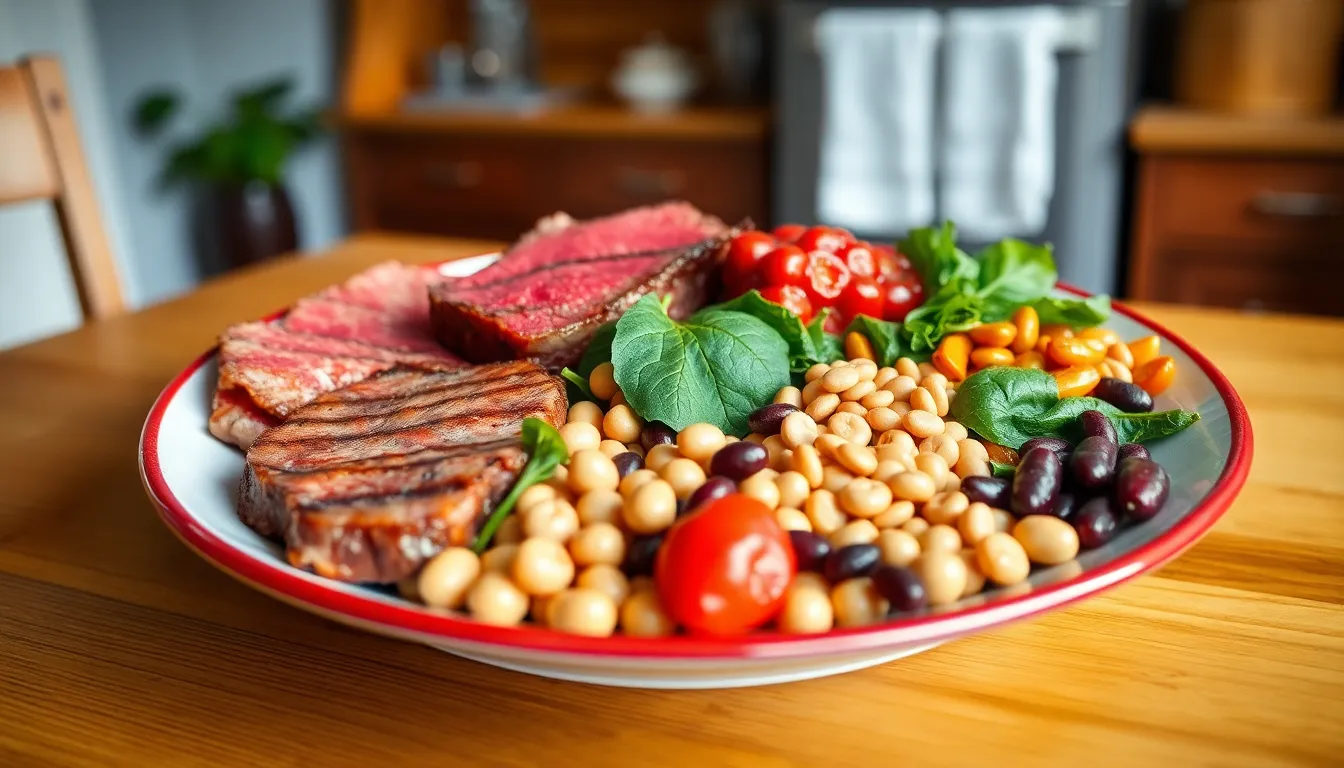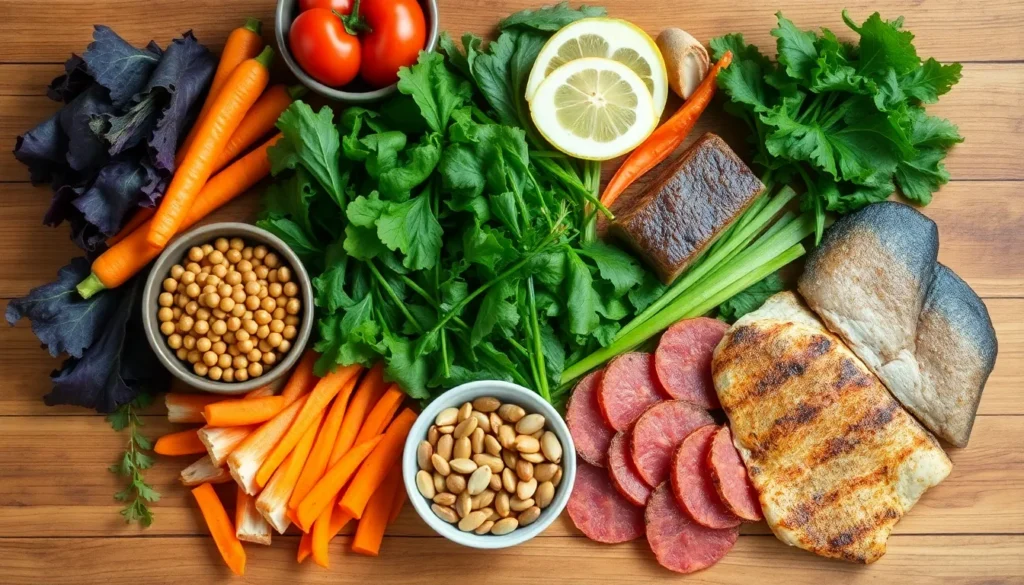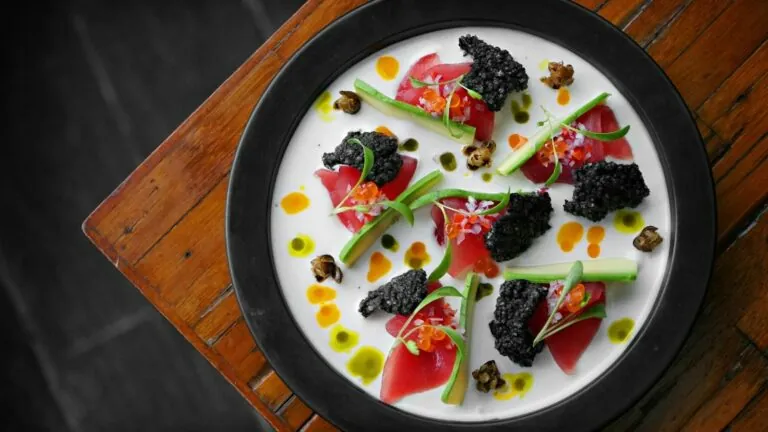Table of Contents
ToggleFeeling a bit like a wilted plant? It might be time to pump up your iron intake! Iron-rich foods are the unsung heroes of nutrition, essential for keeping energy levels high and those pesky fatigue blues at bay. Whether you’re a meat lover or a veggie enthusiast, there’s a world of delicious options waiting to fuel your body and keep you feeling vibrant.
What Are Iron-Rich Foods?
Iron-rich foods provide essential nutrients vital for optimal health. Animal-based sources include red meat, poultry, and fish. These options contain heme iron, which the body absorbs more efficiently compared to plant-based iron.
Legumes are significant plant sources of iron. Lentils, chickpeas, and beans contain non-heme iron, contributing to daily intake. Tofu and edamame also offer substantial amounts, catering well to vegetarian diets.
Nuts and seeds play a role as well. Pumpkin seeds, sesame seeds, and cashews are examples that enhance iron levels. Incorporating these snacks into meals boosts nutritional value without much effort.
Whole grains, like quinoa, brown rice, and oats, deliver iron too. They serve as versatile bases for various dishes, making it simple to increase dietary iron. Enriched cereals provide another convenient way to incorporate iron-rich foods.
Dark leafy greens cannot be overlooked. Spinach, kale, and Swiss chard are rich in iron and can easily complement a range of meals. Consuming these vegetables raw or cooked maximizes their health benefits.
Fruits, especially dried varieties, contribute to iron intake. Dried apricots, raisins, and prunes provide an additional energy source while supplying iron. Combining these with other iron sources enhances absorption.
Each food category presents various options for fulfilling iron requirements. Prioritizing these foods can lead to improved energy levels and overall vitality.
Benefits of Iron-Rich Foods

Iron-rich foods offer numerous advantages that contribute significantly to overall health and well-being.
Supports Healthy Blood Production
Healthy blood production relies on adequate iron intake. Iron forms a crucial part of hemoglobin, the protein responsible for oxygen transport in red blood cells. Optimal hemoglobin levels prevent anemia and promote effective oxygen delivery to tissues and organs. Animal sources supply heme iron, which the body absorbs efficiently. Plant-based options provide non-heme iron, which supports iron levels when consumed with vitamin C-rich foods. Increased iron intake can improve blood health and support overall vitality.
Boosts Energy Levels
Iron plays a vital role in maintaining energy levels. Low iron can lead to fatigue, sluggishness, and decreased physical performance. As red blood cells transport oxygen throughout the body, sufficient iron ensures that energy production remains optimal. Consuming iron-rich foods, such as red meat, beans, and spinach, can combat feelings of tiredness. When individuals prioritize these foods, they enhance their stamina and overall physical well-being. Regular intake of iron-rich options directly contributes to increased energy and vitality.
Sources of Iron-Rich Foods
Choosing the right sources of iron-rich foods is vital for maintaining energy levels and overall health. Below are the primary categories of foods that are excellent for boosting iron intake.
Animal-Based Sources
Red meat, particularly beef and lamb, stands out as a rich source of heme iron, which the body absorbs effectively. Poultry like chicken and turkey also provides considerable amounts of iron, aiding in energy production. Fish, including salmon and tuna, contributes additional iron while delivering healthy omega-3 fatty acids. These animal sources not only enhance iron levels but also support muscle function. Including a variety of these foods in meals can significantly elevate iron consumption.
Plant-Based Sources
Legumes, such as lentils, chickpeas, and beans, represent crucial sources of non-heme iron. Tofu and edamame present excellent alternatives for vegetarians, packed with iron and protein. Dark leafy greens like spinach and kale offer versatile options for meals while delivering a good iron boost. Nuts and seeds, particularly pumpkin seeds and cashews, also contribute valuable iron. Whole grains like quinoa and brown rice serve as nutritious bases for various dishes, providing essential nutrients alongside iron. Including these plant-based foods can further enhance iron intake and overall vitality.
How to Incorporate Iron-Rich Foods into Your Diet
Incorporating iron-rich foods into daily meals enhances energy levels and overall well-being. Simple strategies can make it easy to include these nutritious options.
Meal Planning Tips
Start by including a variety of iron-rich foods in weekly meal plans. Incorporate animal-based sources like beef and chicken alongside vegetarian options such as lentils and spinach. Use recipes that combine multiple sources, ensuring balanced meals. For instance, add quinoa to a salad filled with kale, chickpeas, and nuts. Include snacks rich in iron, like dried fruits and pumpkin seeds, to boost intake throughout the day. Prioritize meals that blend heme and non-heme iron sources to enhance absorption.
Cooking Methods to Preserve Iron
Choose cooking methods that help maintain the iron content in foods. Steaming vegetables like spinach retains more iron compared to boiling. Sautéing legumes ensures they cook quickly while keeping their nutritional value. Opt for cast iron cookware, as it increases the iron content of foods during preparation. Try marinating meat with lemon juice to enhance iron absorption. Avoid overcooking iron-rich foods, as it can lead to nutrient loss. Emphasizing these techniques supports optimal iron intake in everyday cooking.
Incorporating iron-rich foods into daily meals is essential for maintaining energy and overall health. By exploring both animal and plant-based sources, individuals can find a variety of options that suit their dietary preferences. Prioritizing these foods not only supports healthy blood production but also enhances physical performance and vitality.
With practical meal planning tips and cooking methods that preserve iron content, it’s easier than ever to boost iron intake. Embracing these nutritious choices will lead to improved well-being and a more energetic lifestyle. Making small changes today can pave the way for a healthier tomorrow.




